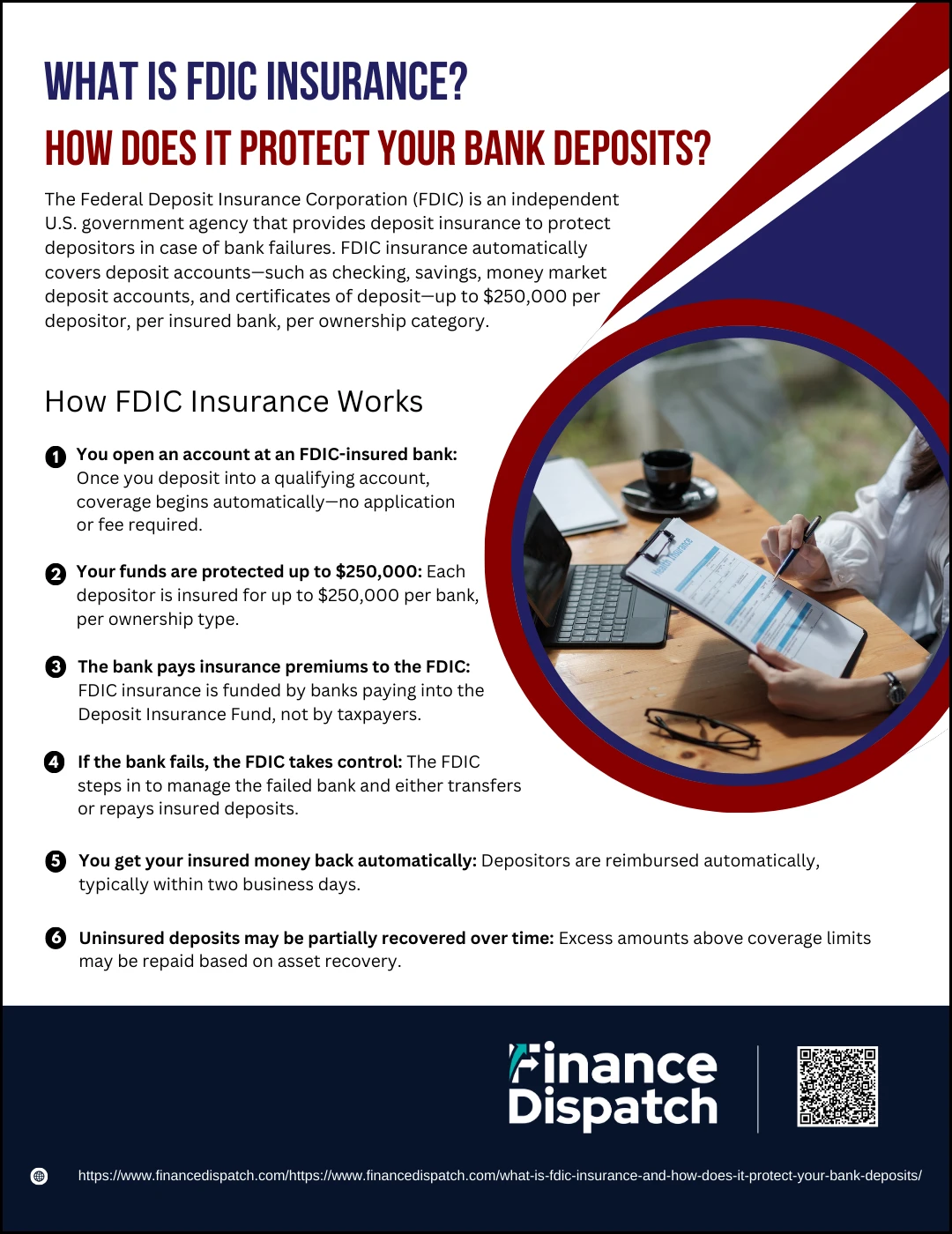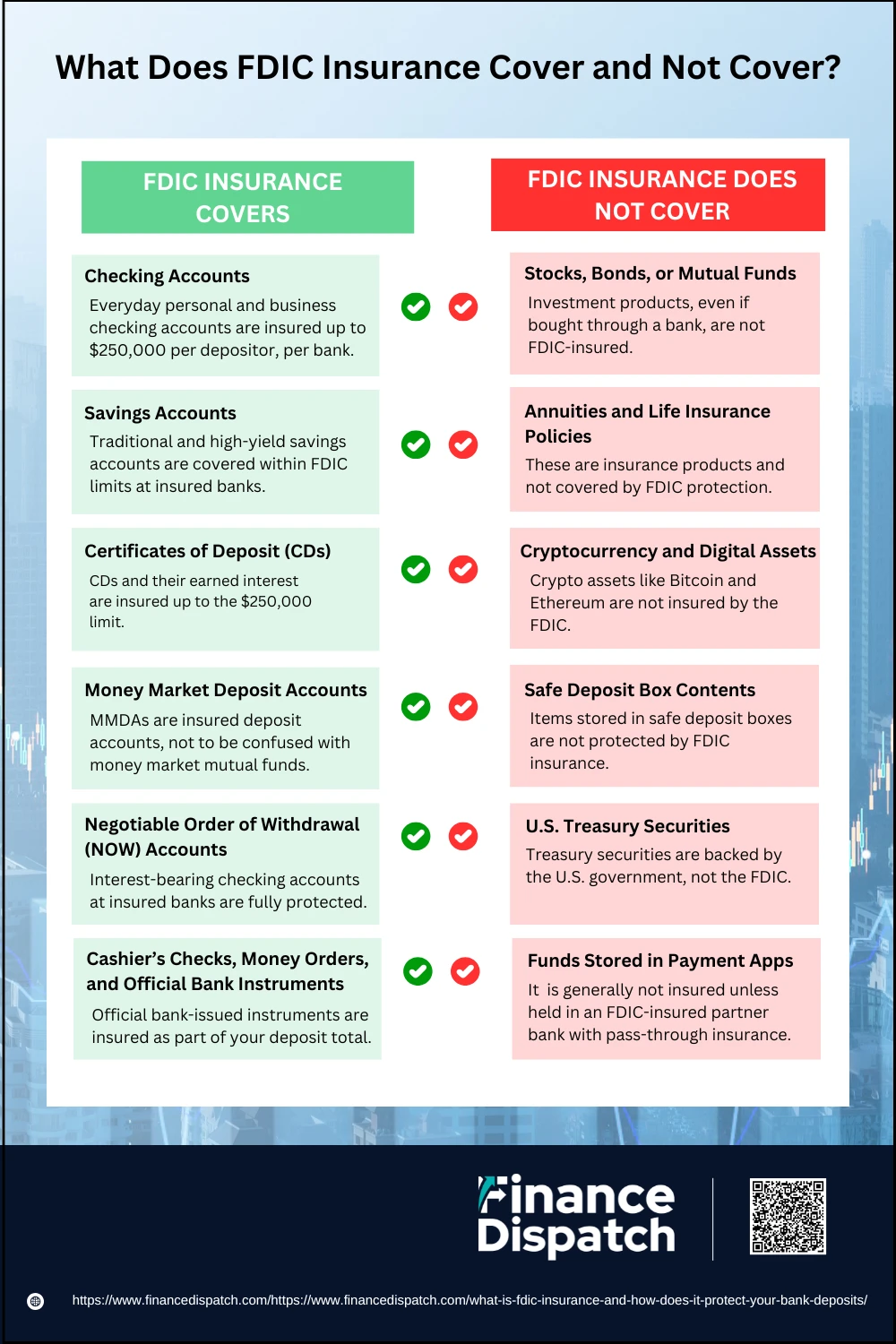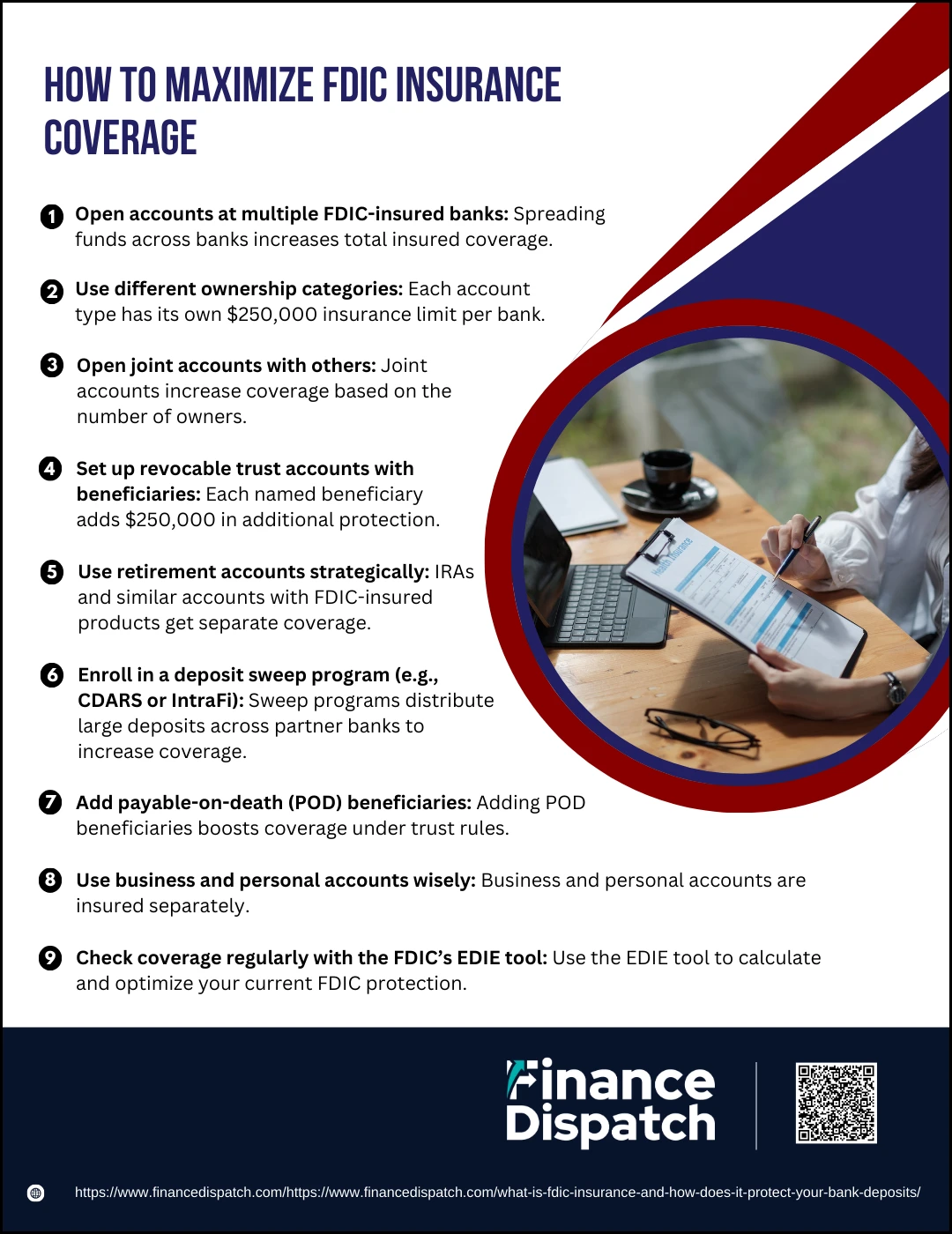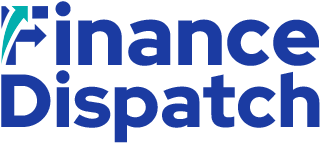Imagine waking up to headlines that your bank has collapsed. It’s a scary thought—but one that’s been a reality for some people during economic downturns. Fortunately, if your bank is FDIC-insured, your money is protected even in the worst-case scenario. The Federal Deposit Insurance Corporation (FDIC) exists to safeguard your deposits and ensure stability in the U.S. financial system. In this article, you’ll learn what FDIC insurance is, how it works, and—most importantly—how it protects your hard-earned money when a bank fails.
What is FDIC Insurance?
FDIC insurance is a safety net for your money, provided by the Federal Deposit Insurance Corporation—an independent agency of the U.S. government. When you deposit money in a checking, savings, or other qualifying account at an FDIC-insured bank, that money is automatically protected up to $250,000 per depositor, per bank, and per account ownership category. This insurance means that even if your bank fails, the federal government ensures you won’t lose your insured funds. FDIC insurance plays a critical role in maintaining trust in the banking system, offering peace of mind that your deposits are secure.
A Brief History of the FDIC
The FDIC was born out of one of the darkest periods in American financial history—the Great Depression. After thousands of bank failures wiped out people’s savings, Congress passed the Banking Act of 1933 to restore confidence in the U.S. banking system. This legislation established the Federal Deposit Insurance Corporation, which began insuring deposits in 1934. Since then, the FDIC has protected consumers through times of economic uncertainty, including the Great Recession and more recent bank failures. Over the decades, not a single penny of insured funds has been lost, making the FDIC a cornerstone of financial stability in the United States.
 How FDIC Insurance Works
How FDIC Insurance Works
FDIC insurance serves as a financial safety net, automatically protecting your money when it’s placed in a qualifying account at an insured bank. This protection kicks in without you needing to sign up or pay extra. The moment you deposit funds into a checking account, savings account, or certificate of deposit at a bank that is backed by the FDIC, your money is covered up to $250,000 per depositor, per bank, and per ownership category. But the process doesn’t stop there—the FDIC has a well-structured system to step in and protect your funds if a bank collapses. Here’s how it all works, step by step:
1. You open an account at an FDIC-insured bank.
Once your deposit is made into a qualifying account—like a checking, savings, or certificate of deposit—it is automatically protected by FDIC insurance. You don’t have to apply or pay a fee for this coverage.
2. Your funds are protected up to $250,000.
The FDIC insures each depositor up to $250,000 per bank, per account ownership category. This means you could qualify for more than $250,000 in coverage if your funds are distributed across different ownership types (like individual, joint, or trust accounts).
3. The bank pays insurance premiums to the FDIC.
FDIC coverage is funded not by taxpayers but by the banks themselves. All insured banks pay regular premiums into the Deposit Insurance Fund (DIF), which is used to reimburse depositors in the event of a bank failure.
4. If the bank fails, the FDIC takes control.
The FDIC steps in as the receiver of the failed bank. It may transfer your deposits to another healthy FDIC-insured bank or issue you a check for the insured amount—usually within two business days of the bank’s closure.
5. You get your insured money back automatically.
Depositors do not need to take action or file claims to recover insured funds. The FDIC ensures that your insured balance is either accessible through a new bank or returned to you directly, typically with minimal disruption.
6. Uninsured deposits may be partially recovered over time.
If your total balance exceeds the FDIC’s coverage limit, the excess amount is not guaranteed. However, the FDIC may issue a Receiver’s Certificate, which can entitle you to a portion of the remaining funds if the bank’s assets are recovered and sold off successfully.
 What Does FDIC Insurance Cover and Not Cover?
What Does FDIC Insurance Cover and Not Cover?
FDIC insurance offers peace of mind by protecting your deposits in case a bank fails—but it’s important to know exactly what that protection includes. The insurance doesn’t cover every financial product or service you might find at a bank. It specifically applies to deposit accounts held at FDIC-insured institutions and safeguards both the money you put in and any interest earned—up to the insurance limits. However, investments, insurance products, and certain digital funds fall outside this safety net. To fully protect your finances, you need to understand which accounts qualify for coverage and which ones don’t. Here’s a more detailed look:
FDIC Insurance Covers
1. Checking Accounts
Standard personal and business checking accounts are insured up to $250,000 per depositor, per insured bank, for each ownership category. These accounts are where most people keep their everyday funds.
2. Savings Accounts
Whether it’s a traditional savings account or a high-yield savings account, your money is fully covered as long as it’s held at an FDIC-insured bank and within the insurance limits.
3. Certificates of Deposit (CDs)
CDs, which lock in your money for a set term in exchange for interest, are covered along with the earned interest—up to the $250,000 cap.
4. Money Market Deposit Accounts (MMDAs)
Not to be confused with money market mutual funds, MMDAs are savings accounts that may offer limited check-writing and are fully protected under FDIC coverage.
5. Negotiable Order of Withdrawal (NOW) Accounts
These are interest-bearing checking accounts and are eligible for full insurance as long as they’re held in an insured institution.
6. Cashier’s Checks, Money Orders, and Other Official Bank Instruments
If your bank issues a cashier’s check or money order, those funds are also insured as part of your deposit total at that bank.
7. Certain Retirement Accounts
Self-directed IRAs, 401(k)s, and other retirement plans that invest only in FDIC-insured deposits like CDs and savings accounts are covered.
FDIC Insurance Does Not Cover
1. Stocks, Bonds, or Mutual Funds
Investment products—even if purchased at a bank—are not considered deposits and are therefore not insured by the FDIC.
2. Annuities and Life Insurance Policies
These are insurance products, not bank deposits, and fall outside the FDIC’s protection, even if sold by your bank.
3. Cryptocurrency and Digital Assets
Bitcoin, Ethereum, and other cryptocurrencies are not insured. Even if bought through a bank or app, these are speculative investments.
4. Safe Deposit Box Contents
The physical belongings you keep in a safe deposit box at a bank are not protected by FDIC insurance—even though the box is located inside the bank.
5. U.S. Treasury Securities (Bills, Notes, Bonds)
These are backed directly by the U.S. government, not the FDIC, and while they are low-risk, they are not part of FDIC coverage.
6. Funds Stored in Payment Apps (e.g., PayPal, Venmo)
Money held in peer-to-peer payment apps is generally not insured. However, if the funds are deposited into a partner FDIC-insured bank and meet certain requirements (like pass-through insurance), they may be covered.
FDIC Coverage Limits Explained
One of the most important aspects of FDIC insurance understands how much of your money is actually protected. The standard coverage limit is $250,000 per depositor, per insured bank, per ownership category. This means that depending on how you structure your accounts, you may be eligible for much more than $250,000 in total coverage. Knowing how these limits work can help you organize your finances in a way that keeps your entire deposits safe—even if you have large balances spread across different accounts.
Key FDIC Coverage Limits
- Single Accounts: Up to $250,000 per owner, per bank. These include checking, savings, and CDs in one person’s name only.
- Joint Accounts: Up to $250,000 per co-owner. A joint account with two people is insured up to $500,000 total.
- Certain Retirement Accounts: Up to $250,000 per owner. Includes self-directed IRAs and similar retirement accounts that hold only FDIC-insured deposits.
- Revocable Trust Accounts: Up to $250,000 per unique beneficiary. For example, a trust with two beneficiaries may be insured for $500,000.
- Irrevocable Trust Accounts: Up to $250,000 per beneficiary, depending on the trust terms and beneficiary rights.
- Corporation, Partnership, or Unincorporated Association Accounts: Up to $250,000 per entity. Business accounts in these categories are insured separately from personal accounts.
- Government Accounts: Up to $250,000 per official custodian. This includes deposits owned by federal, state, or local government entities.
 How Does FDIC Insurance Protect Your Bank Deposits?
How Does FDIC Insurance Protect Your Bank Deposits?
When you put your money into a bank, you expect it to be there when you need it. But what if the bank fails? That’s where FDIC insurance comes in. It protects your deposits and ensures that even in a financial crisis, your insured funds are safe and accessible. The Federal Deposit Insurance Corporation (FDIC) acts swiftly to minimize disruption and maintain trust in the banking system. This protection is automatic, doesn’t cost you anything, and is one of the strongest guarantees the U.S. government offers to everyday consumers. Here’s a deeper look at how FDIC insurance works to keep your money safe:
How FDIC Insurance Protects Your Deposits
1. Your deposit is automatically insured
From the moment you open a qualifying account—such as a checking, savings, or certificate of deposit (CD)—at an FDIC-insured bank, your money is automatically covered up to $250,000 per depositor, per insured bank, per ownership category. No action is needed on your part to activate this protection.
2. The FDIC regularly monitors banks
The FDIC doesn’t just step in when banks fail—it works behind the scenes year-round. It examines banks to ensure they’re financially stable, well-managed, and following consumer protection laws. This oversight helps prevent failures before they happen.
3. If a bank fails, the FDIC takes control immediately
When a bank becomes insolvent or can no longer meet its obligations, the FDIC steps in as a “receiver.” It either arranges for another healthy bank to take over the failed bank’s accounts or begins the payout process directly.
4. Deposits are restored within days
Typically, insured depositors get access to their money within two business days—often the next business day after a bank closes. This might be through a new account at another FDIC-insured bank or a direct check from the FDIC.
5. No claims process for insured amounts
You don’t need to file any paperwork or wait weeks to find out if you’ll get your money. The FDIC identifies insured accounts and pays them out automatically, up to the coverage limits.
6. Uninsured amounts may be partially recovered
If your deposits exceed the FDIC limit, the excess amount isn’t guaranteed. However, you will receive a Receiver’s Certificate for the uninsured balance. Over time, as the FDIC sells off the failed bank’s assets, you may recover some or all of that money, depending on how much is collected.
7. Peace of mind during economic uncertainty
Perhaps the biggest benefit of FDIC insurance is psychological: it prevents panic. Knowing your money is safe helps avoid bank runs and ensures people continue to trust the banking system, even during recessions or financial turbulence.
 How to Maximize FDIC Insurance Coverage
How to Maximize FDIC Insurance Coverage
If you’re holding more than $250,000 in the bank, it’s natural to wonder whether all of it is truly safe. The standard FDIC insurance limit is $250,000 per depositor, per insured bank, per ownership category—but that doesn’t mean you’re limited to just $250,000 in total protection. With smart planning and account structuring, you can expand your coverage to safeguard significantly more of your money. Whether you’re an individual, a family, a business owner, or a trust holder, there are several practical ways to ensure your entire balance is fully insured. Here’s how to make the most of FDIC protection:
Ways to Maximize Your FDIC Insurance Coverage:
1. Open accounts at multiple FDIC-insured banks
Since FDIC insurance is applied per bank, spreading your deposits across different insured banks increases your total coverage. For example, $250,000 at Bank A and $250,000 at Bank B gives you $500,000 in coverage.
2. Use different ownership categories
FDIC insurance covers each ownership category separately. So, you can have a single account, a joint account, a revocable trust, and a retirement account—all at the same bank—and each can be insured up to $250,000 or more, depending on the structure.
3. Open joint accounts with others
Joint accounts are insured up to $250,000 per co-owner. A jointly owned account between two people is covered for up to $500,000. Each additional co-owner adds another $250,000 of coverage, provided all have equal rights to the funds.
4. Set up revocable trust accounts with beneficiaries
FDIC coverage for revocable trusts is $250,000 per unique beneficiary. If you have a trust account with four different beneficiaries, the account can be insured for up to $1,000,000 at one bank.
5. Use retirement accounts strategically
Self-directed retirement accounts like IRAs and 401(k)s that hold only FDIC-insured deposits are insured separately up to $250,000 per owner. This can be in addition to your other insured accounts at the same bank.
6. Enroll in a deposit sweep program (e.g., CDARS or IntraFi)
Some banks offer services that automatically spread your deposits across a network of partner banks. These services allow you to access multimillion-dollar FDIC insurance coverage while managing the funds from a single account.
7. Add payable-on-death (POD) beneficiaries
Adding POD beneficiaries to your accounts can increase your coverage if the beneficiaries qualify and meet FDIC criteria. Each eligible beneficiary provides an additional $250,000 in coverage under revocable trust rules.
8. Use business and personal accounts wisely
Business accounts are considered separate ownership categories from personal accounts. If you’re a sole proprietor, having both types of accounts at the same bank can increase your insured total.
9. Check coverage regularly with the FDIC’s EDIE tool
The Electronic Deposit Insurance Estimator (EDIE) is a free tool from the FDIC that lets you enter your bank account information and calculate how much of your money is currently protected. It also helps you explore different options to expand your coverage.
What Happens If a Bank Fails?
Bank failures are rare, but they do happen—especially during times of economic stress. When a bank closes its doors unexpectedly, it’s natural to worry about your money. Thankfully, if your funds are in an FDIC-insured account, you don’t need to panic. The Federal Deposit Insurance Corporation has a clear and fast process for responding to bank failures to ensure that depositors are protected and can access their money with minimal disruption. Here’s what typically happens when a bank fails:
What the FDIC Does When a Bank Fails:
1. Takes immediate control of the failed bank: The FDIC steps in as the receiver, taking over the bank’s operations as soon as it is closed by regulators—often on a Friday evening.
2. Attempts to find a healthy bank to assume accounts: In most cases, the FDIC arranges for another FDIC-insured bank to acquire the deposits and reopen the branches, allowing customers to access their money quickly.
3. Transfers insured deposits to the new bank: If a buyer is found, your insured funds (up to $250,000 per depositor, per ownership category) are automatically transferred to the new bank—no action is needed from you.
4. Issues checks for insured amounts if no buyer is found: If the FDIC cannot find a bank to take over the failed one, it will mail you a check for your insured deposit balance, typically within a few business days.
5. Provides a Receiver’s Certificate for uninsured amounts: If your balance exceeds the FDIC insurance limit, you will receive a certificate for the uninsured portion. You may recover some of that money later as the bank’s assets are sold.
6. Maintains access to your funds with minimal disruption: Most customers can access their insured money immediately or by the next business day. Debit cards, checks, and online access may resume quickly through the acquiring bank.
7. Does not require you to file a claim: If your money is within the insured limits, you don’t need to do anything—the FDIC automatically identifies and reimburses eligible depositors.
FDIC vs. NCUA: What’s the Difference?
Both the FDIC and the NCUA play a crucial role in protecting your money, but they apply to different types of financial institutions. The FDIC (Federal Deposit Insurance Corporation) insures deposits at most banks, while the NCUA (National Credit Union Administration) provides similar coverage for credit unions. Although their structures are slightly different, the level of protection they offer to consumers is virtually the same. Understanding the distinction between the two can help you make informed decisions about where to keep your money.
FDIC vs. NCUA Comparison Table
| Feature | FDIC | NCUA |
| Full Name | Federal Deposit Insurance Corporation | National Credit Union Administration |
| Type of Institutions Covered | Banks and savings associations | Federally insured credit unions |
| Deposit Insurance Limit | $250,000 per depositor, per bank, per category | $250,000 per depositor, per credit union, per category |
| Coverage Scope | Checking, savings, CDs, money market accounts | Same types of accounts as FDIC |
| Backed By | Full faith and credit of the U.S. government | Full faith and credit of the U.S. government |
| Year Established | 1933 | 1970 |
| Insurance Fund | Deposit Insurance Fund (DIF) | National Credit Union Share Insurance Fund (NCUSIF) |
| Online Verification Tool | BankFind | NCUA Credit Union Locator |
How to check if Your Bank is FDIC-Insured
Before depositing your money into any bank, it’s important to make sure the institution is FDIC-insured. This ensures your eligible deposits are protected up to $250,000 per depositor, per ownership category, in case the bank fails. While most reputable banks in the U.S. are covered, not all financial institutions are. Fortunately, there are a few simple ways to confirm whether your bank is backed by the FDIC.
Ways to check if Your Bank is FDIC-Insured
1. Look for the FDIC sign at your bank branch: Most insured banks display the official FDIC logo on doors, teller windows, and deposit slips.
2. Ask a bank representative directly: Staff at the bank can confirm whether the institution is FDIC-insured and answer any related questions.
3. Visit the bank’s website: Most banks include FDIC membership details in the footer of their websites or on their “About Us” page.
4. Use the FDIC’s BankFind Tool: Visit fdic.gov/BankFind and search by the bank’s name, location, or charter number to confirm its insurance status and get detailed information.
5. Call the FDIC for verification: You can also contact the FDIC directly at 1-877-ASK-FDIC (1-877-275-3342) to verify a bank’s insurance status.
FDIC’s Impact on the Economy
The FDIC plays a vital role in maintaining stability and trust within the U.S. financial system. By insuring bank deposits and responding swiftly to bank failures, the FDIC helps prevent panic and reassures the public that their money is safe—even in times of economic uncertainty. This confidence discourages bank runs, where large numbers of customers rush to withdraw their funds out of fear. Beyond deposit protection, the FDIC also supervises financial institutions to ensure they operate safely and follow consumer protection laws. Through these efforts, the FDIC not only safeguards individual depositors but also contributes to the broader health and resilience of the national economy.
Conclusion
FDIC insurance is one of the most reliable protections available to bank customers in the United States. It provides automatic coverage for your deposits—up to $250,000 per depositor, per bank, per ownership category—ensuring your money is safe even if your bank fails. By understanding what FDIC insurance covers, how it works, and how to maximize your coverage, you can make more confident and informed decisions about where to keep your funds. In a world where financial uncertainty can arise without warning, knowing your money is backed by the full faith and credit of the U.S. government offers true peace of mind.



